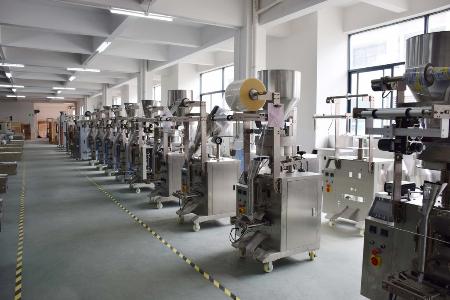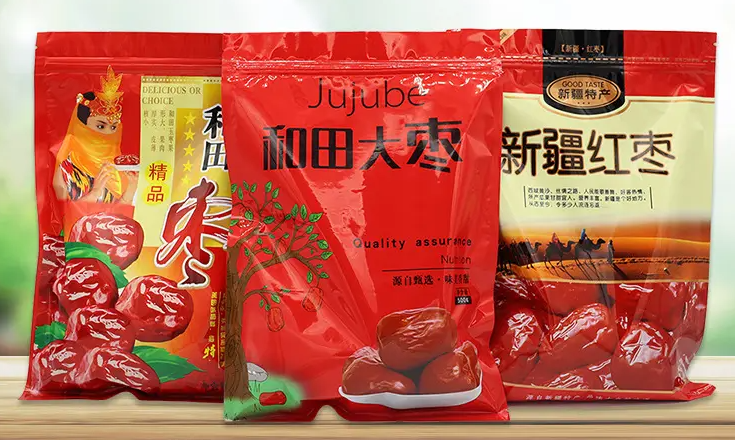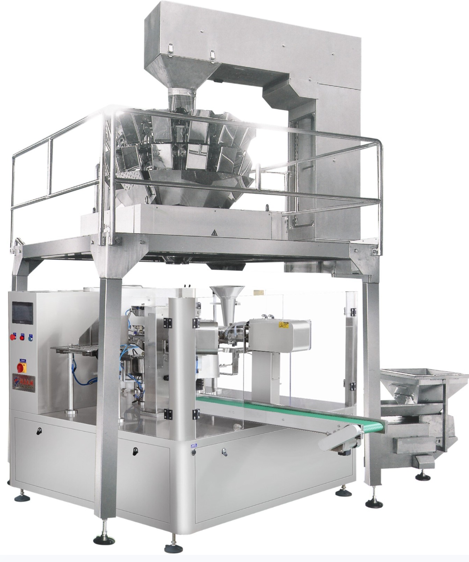
The dairy products are of excellent quality and diverse in variety. They include solidified probiotic yoghurt, low-fat yoghurt, sugar-free yoghurt, fruit-flavored yoghurt, and more. Additionally, there are various series such as packaged strawberry yoghurt, sweet milk, and cocoa milk.
Liquid milk is produced from fresh milk obtained from healthy cows, which undergoes effective heat sterilization treatment before being packaged and sold for consumption. According to the International Dairy Federation (IDF), liquid milk encompasses three major categories: pasteurized milk, sterilized milk, and acidophilus milk. Liquid milk has a complex chemical composition, consisting of at least 100 components, mainly including water, fat, phospholipids, proteins, lactose, inorganic salts, and more.

The production process and technical requirements of liquid milk are as follows: First, the raw milk undergoes preprocessing, including acceptance, filtration, purification, reconstitution of milk powder, and standardization of product quality. Next, homogenization is carried out under pressure ranging from 170 to 220 kg/cm2 and at a temperature controlled between 50 and 60°C. Subsequently, sterilization or ultra-high temperature sterilization is performed, with specific conditions being a holding time of 5-10 seconds at 115-120°C or 1-4 seconds at 130-150°C. Finally, the milk is cooled by saltwater to below 10°C after high-temperature sterilization and then canned.
As for yoghurt production, it involves a series of steps and key points. Yoghurt is made primarily from milk, which is pasteurized, cooled, and then inoculated with lactic acid bacteria for fermentation. Regular consumption of yoghurt contributes to the absorption of phosphorus, calcium, and iron in the human body, maintains the balance of B vitamins, alleviates lactose intolerance, lowers cholesterol, prevents cardiovascular and liver diseases, as well as prevents constipation and bacterial diarrhea. Additionally, yoghurt enhances the body's immunity, inhibits cancer, has anti-aging properties, and promotes dental health and hair growth.
During yoghurt production, the milk undergoes preprocessing steps including acceptance, filtration, purification, reconstitution of milk powder, standardization of product quality, and sterilization. Homogenization is then performed under pressure ranging from 160 to 180 kg/cm3 and at a temperature controlled between 50 and 60°C. Subsequently, sterilization or ultra-high temperature sterilization is carried out, with conditions being a holding time of 5-10 seconds at 115-120°C or 1-4 seconds at 130-150°C. During the fermentation and culturing stage, a mixed fermentation agent (such as Lactobacillus bulgaricus and Streptococcus thermophilus) is added in certain proportions, and culturing is carried out under specific conditions. Finally, after thorough mixing of the fermentation agent, the product should be promptly packaged. The finished product should be stored in a cold storage at 2-8°C and sold in a low-temperature environment.
The processing procedure of red dates is briefly described as follows: Firstly, high-quality dates grown by farmers are purchased. After rigorous selection and grading, they undergo dehydration and drying. Then, they are stacked for 12-15 days to redistribute moisture, ensuring that the taste and quality of the dates are not affected. During this process, attention must be paid to preventing fermentation and spoilage.

A simple method to judge the dryness of honey dates is to break them open by hand. If the pit and flesh separate easily, it indicates that the honey dates are sufficiently dried. However, if the flesh sticks to the pit, then further baking is needed.
The quality of the dates is uniformly fine and delicate, with a sweet and rich taste, meeting food safety standards. Their surface exhibits golden thread-like patterns, with a brown coloration, and a sugar content of approximately 70%, and a moisture content ranging from 15% to 18%.
overview of the production process for frozen vegetable packaging and sugar dates
Sugar dates should have a pit residue rate not exceeding 1%, with a bright and translucent purple-red color. They should be deliciously sweet, without any off-flavors or burnt taste. The sugar content must be above 70%, and the moisture content should be controlled between 15% and 18%.
Packaging Overview of Frozen Vegetables:
This includes broccoli, snap peas, fava beans, sweet corn, mushrooms, tomatoes, and sea vegetables, with edamame, broccoli, cauliflower, and rapeseed being preferred ingredients. Additionally, it encompasses food raw materials such as mooncakes, candies, biscuits, egg tarts, cakes, beverages, salad oil, butter, flour, and syrup. You can opt for our pre-made pouch packaging machine, complemented with a drop feed electronic scale.

Frozen vegetables are a type of frozen food made from rapidly freezing fresh vegetables like peppers, tomatoes, legumes, and cucumbers, typically in small packaging. This process forms small, regular ice crystals within the vegetables, evenly distributed throughout the cells to prevent damage to the vegetable tissue. Moreover, as biochemical processes in the vegetables are inhibited, bacteria and fungi find it challenging to grow and reproduce. Convenient to consume, they require no washing, cutting, or thawing before enjoying indoors. Since most frozen vegetables are precooked and may contain added salt or seasonings, cooking time is short, and taste, color, and vitamin content are comparable to fresh vegetables.
Vacuum freezing vegetables, another type of frozen vegetables, undergoes processing at high vacuum and extremely low temperatures, essentially oxygen-free and light-protected to preserve the color, aroma, taste, and shape of fresh vegetables while maximizing the retention of nutrients like vitamins, carbohydrates, and proteins found in vegetables, fruits, and meat.
The packaging material for frozen vegetables mainly comprises low-temperature grade polyethylene plastic film, with packaging conducted on a vertical forming-filling-sealing machine, appearing pillow-shaped. To reduce enzymatic activity in frozen fruits, a moderate amount of sugar is often added during packaging. Additionally, leafy vegetables require pre-cooking before freezing. Prior to packaging, preparing and weighing frozen fruits and vegetables is relatively complex, involving grading and inspection typically conducted post-freezing. Vibrating conveyors assist in product separation and sorting, with inspection devices set up between the freezer or chiller and weighing stations, requiring strict control of conveyor speed and flow to ensure accurate and stable weighing results. Some products (such as peas and dried vegetables) may be packaged by volume. For fragile fruits such as mulberries, blackberries, raspberries, etc., it's advisable to use polyethylene bags for packaging before freezing. There's a distinction between frozen vegetables and fresh ones, as fruits and vegetables require processing of stems, peels, cores, and shells before freezing to reduce unnecessary energy consumption. The remaining solids can be chopped, sliced, shredded, or ground into a paste before freezing.
In many stages of food processing, particular attention is required: Firstly, an extended duration between harvesting and pre-processing may result in flavor loss in vegetables. Secondly, storing products at high temperatures (30℃) for 24 hours may cause a loss of nearly half of the spirulina. Finally, storing peas at 25℃ for 6 hours may result in a loss of about one-third of their sugar content. Spinach, beans, mushrooms, and potatoes may lose a considerable amount of glutamate and flavor in high-temperature environments. Therefore, such ingredients require rapid transportation and immediate freezing. For fruits like bananas, peaches, apples, and pears, exposure to air after peeling rapidly turns them into tannin catechins. In this case, the ammoniation freezing method can be used to delay enzymatic reactions by replacing oxygen with ammonia gas, preventing discoloration. Additionally, adding ascorbic acid helps prevent discoloration. Strawberries, when exposed to air after peeling, quickly discolor and dehydrate, affecting taste. Pre-cooking vegetables with hot water or steam can inactivate some enzymes such as catalase, resulting in poor taste. Pre-cooking also helps maintain the color of vegetables.
Packaging of frozen fruits and vegetables should focus on preventing dehydration, facilitating transportation, and avoiding physical and mechanical damage. Unless individual products are sensitive to oxygen, light and oxygen barriers are not necessary. Common packaging materials for frozen fruits and vegetables include low-density polyethylene film and its plastic coatings and composite materials, as well as polypropylene and ethylene/vinyl acetate films. These films offer advantages such as low cost, excellent transparency, low water vapor transmission rate, and low-temperature brittleness. Additionally, other packaging forms for frozen fruits and vegetables include moisture-proof glassine coated with plastic, moisture-proof (plastic-coated or wax-coated) paper boxes, and polystyrene foam as outer packaging boxes.